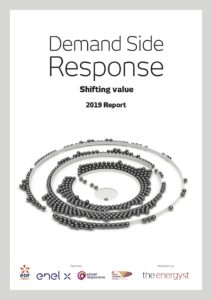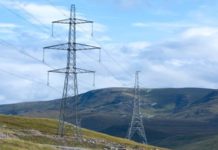
UK Power Networks has begun procuring flexibility to manage winter peak type constraints. But head of smart grid development, Sotiris Georgiopoulos, says flex will ultimately provide multiple services – from helping to deliver decarbonisation to “restoring supplies when the lights go out.”
“Flexibility is important because the power system is changing. It enables consumers to support the grid and deliver carbon, financial and security benefits to enable a smart, flexible system at lowest cost,” he says.
There is 9GW of generation and storage installed on UKPN’s network, “and we can see there is more coming,” says Georgiopoulos. “Electrification of transport, and potential electrification of heat, will drive significant demand on the network. Flexibility is required to deliver the capacity we will need at lowest cost – and that has driven our flexibility programme.”
Hurdles to clear
To date, UKPN has procured 18MW for deliver over the next two winters. Georgiopoulos says it is a start – and that networks are working to build a flexibility market – but it will not happen overnight.
“New markets are always challenging. They require a lot of work with participants. From a UKPN perspective, the key is to provide long-term certainty, to make clear that this is not a pilot, we are not just testing the waters.”
In that regard, he says UKPN is “investing in people and systems and developing the market by consistently providing a view of system needs … and working with customers, aggregators and community schemes to understand what it will take for them to participate.”
Georgiopoulos says UKPN is attempting to provide: certainty by publishing a five-year roadmap and offering contract lengths of up to four years; consistency by moving to two tenders a year; simplicity through a digital procurement process.
He says DNOs are also working to standardise procurement processes, with efforts via the Energy Networks Association’s Open Networks project likely to deliver improvements “within the next six to twelve months”.
Traditional reinforcement?
If networks do not find the flexibility they require where it is needed, the alternative is traditional reinforcement. “However, there is work still to be done to develop the flexibility offering, engage with customers, remove the barriers before we get to that point,” says Georgiopoulos.
“We start the process to enable flexibility in two years’ time, not tomorrow. We are not there yet and the market is not there yet. So we have to stimulate the market long-term to facilitate short-term liquidity when we need it,” he says. “We have at least a few chances to go to market for flex before we resort to a reinforcement solution.”
While UKPN does not currently plan to “knock on doors” to directly engage with consumers, it is working with aggregators to ensure that operators of the 9GW connected to its network are aware of the opportunity, says Georgiopoulos. “We have to ensure that we mobilise all the different market segments that could deliver.”
Rewarding decarbonisation
While praising DNOs that have set out a long-term roadmap and a commitment to flexibility, some aggregators have questioned whether there is currently sufficient value on offer from DNO schemes to fully mobilise potential providers. Others suggest a need to stack non-energy benefits to build viable business cases.
In that regard, Georgiopoulos says Ofgem’s recent open letter acknowledging that it will consider rewarding DNOs for outputs linked to decarbonisation and broader societal benefits in the next price control “is very encouraging”.
“In the context of Net Zero, that is a way to enable some of the non-energy values to be captured within the regulatory framework,” says Georgiopoulos.
“It is important for industry to deliver [decarbonisation] but also important for Ofgem and Beis to ensure these topics are fully integrated into frameworks that reflect how companies are incentivised and funded.”
Domestic flex ‘will be key’
“A lot of the locational specific constraints [on distribution networks] will have to be addressed by domestic customers … which will play a huge role in the 2020s,” says Georgiopoulos. “From 2023 to 2028 [within the next price control period] I think domestic flexibility will be key for us.”
Flexibility from electric vehicles will be part of that mix, though “more through time of use signals than implicit flexibility,” he suggests, with work ongoing to design capacity rights that provide aggregators and retailers with signals to manage allocated capacity without having to dispatch flexibility.
Ofgem’s review of access and forward looking charges is also working through those aspects, though Georgiopoulos warns capacity trading at low voltage level “could get very complicated very quickly.”
UK Power Networks is currently re-tendering flexibility on the Piclo platform. Details here.

This article was first published in The Energyst’s 2019 DSR Report, of which UK Power Networks is a sponsor.
The report provides a comprehensive snapshot of the DSR market, a survey of DSR providers and qualitative interviews with industrial and commercial firms, plus views from National Grid ESO, distribution network operators, consultants and other market actors.
Download your free copy here.
2019 DSR Report: Shifting value
Related stories:
EDF Energy: Flexibility is the key to Net Zero
DSR: Water firms, industrials and SMEs on what is working, what’s not
Charging reform ‘key to unlocking DNO flex’
Click here to see if you qualify for a free subscription to the print magazine, or to renew.
Follow us at @EnergystMedia. For regular bulletins, sign up for the free newsletter.



